Near Viterbo, an hour from Rome, until 90,000 years ago there was an active volcano that concluded its activities and collapsed in on itself, forming a crater that later became a lake, surrounded by centuries-old forests, creating a protected environment of unspoiled natural beauty: this is Lake Vico. The basin of Lake Vico, the Cimini Mountains and their slopes were protected by the Reserve in the early 1980s, and this has prevented a rush of building construction in an effectively fairy-tale place, with the mirror of water, swimmable, at about 500 meters above sea level at the shores of which it has reeds and wetlands, flat areas with meadows and pastures until it is overlooked by the mountains all around that touch 965 with Mount Fogliano and 851 with Mount Venus. The lake covers about 12 square kilometers, with a perimeter of 18 kilometers and a depth of 50 meters, and the water is very clean. Therefore, in addition to water sports, the place is an ideal destination for biking or hiking thanks to the many trails there (very well marked by the CAI), including one for the blind. We could not miss the mythological reference that attributes the formation of the lake to Hercules, who challenged the poor peasants of the valley to a test of strength: he forcefully stuck his club into the ground, and when he pulled it out, so much water gushed out that it created the lake. Here are ten stops between nature, history and art that cannot be missed during a stay on Lake Vico.
The Lake Vico Regional Nature Reserve covers an area of 4,109 hectares (in the municipalities of Caprarola and Ronciglione) and includes the entire lake basin, as well as the mountain belt surrounding it, and thanks to the environmental integrity of the entire area that a rich plant and animal bio diversity. The forested heritage consists of beech, maple, oak, hazelnut and chestnut groves typical of the area, with centuries of history. In autumn, the slopes of these mountains express an array of colors that are nature’s ever-changing and highly evocative repeating spectacle. The large number of both resident and migratory bird species in the area attracts birdwatchers, and the grebe is the symbol of the reserve. There are also many nocturnal and diurnal birds of prey, ducks and coots that winter here, owls, badgers, pine martens, wild boars, dormice, quercus, howlers and marsh tortoises.
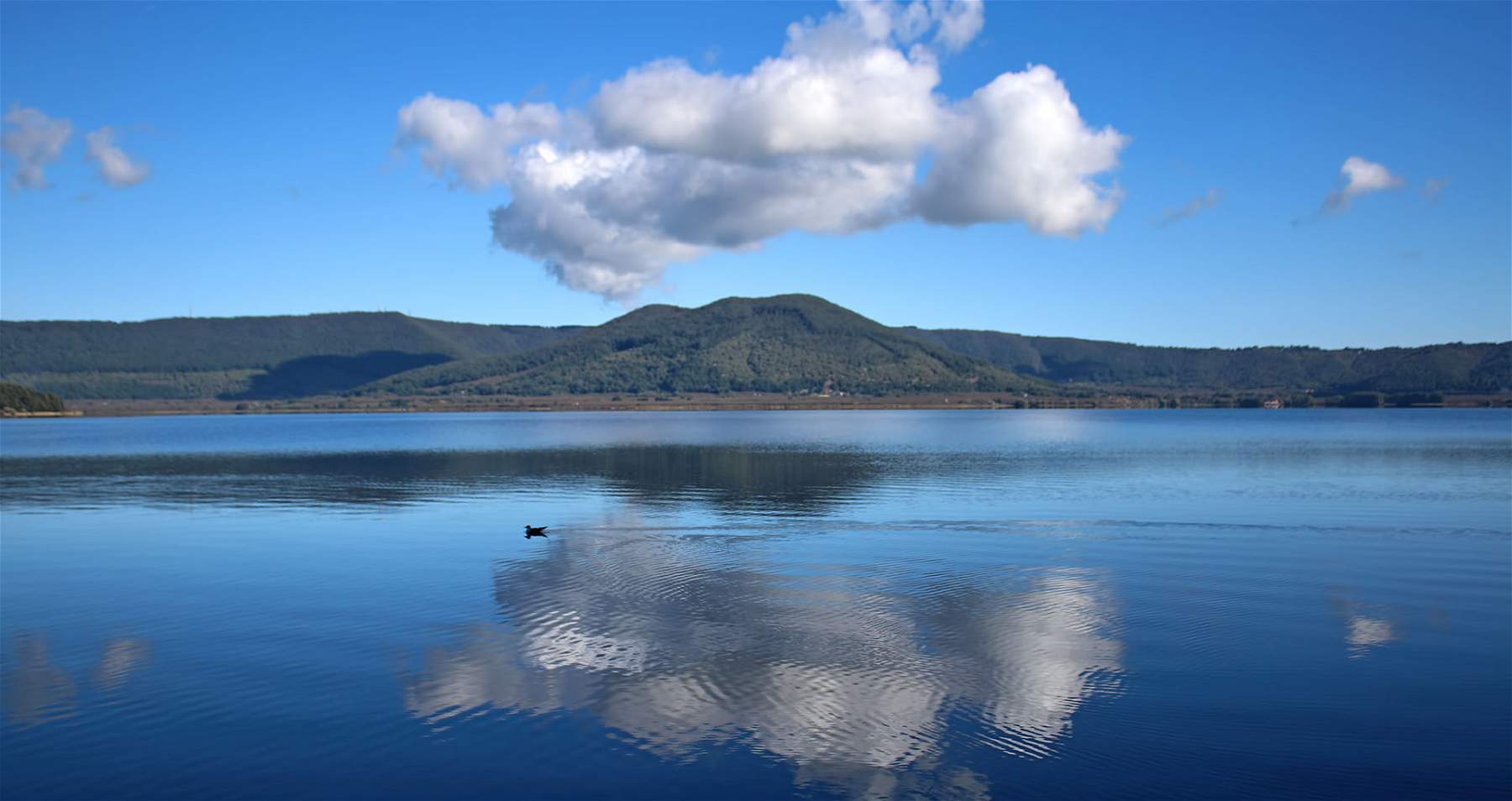
Ronciglione is a village perched on the southern hills of the Cimini Mountains and is among the most important historical centers in Tuscia, taking visitors from the Middle Ages to the Renaissance to the Baroque. It was born in the early Middle Ages when the Prefects of Vico built it in 1045 as a garrison on the trade routes: in fact, an alternative route to the Via Cassia called “via Ciminia” passed through here. A strategic position that brought fortune and wealth to Ronciglione between the 12th and 16th centuries and then gave way to the Farnese family in the 16th century, which further developed and flourished the village. In fact, the Farnese dukes transformed it and urban expansion went hand in hand with architectural and artistic care. The Fontana Grande, Porta Romana, the Church of Peace, and the Mint Palace are examples. The 1671 cathedral is in the Baroque style, with three naves where the central one is divided from the side naves by four pillars and is topped by a heavily worked stone dome. There is an altar in polychrome marble with an altarpiece by Giuseppe Ghezzi depicting Our Lady of the Rosary, and then again a 15th-century triptych by a Viterbo painter, a canvas of the Assumption, and a wooden statue of St. Bartholomew, patron saint of Ronciglione.

The central and identifying element of Caprarola is the majestic Palazzo Farnese, built in the 16th century on a design first by Antonio da Sangallo the Younger and then by Vignola with a pentagonal plan equipped with a circular courtyard. It is an imposing palace-fortress set on a rise from where it dominates the village; to get there you have to climb flights of pincer stairs with several flights and halfway up there is a terrace overlooking the main street. Inside, on the other hand, there is a spiral spiral staircase called the “Scala Regia,” supported by as many as thirty columns, with the walls richly decorated with frescoes by Antonio Tempesta. The staircase culminates in a frescoed dome with the Family’s coat of arms in the center. An architectural and artistic jewel. On the second floor are to be visited the rooms of the Mappamondo, the Angels and the Fasti Farnesiani all frescoed. Outside to admire are the Italian gardens that extend to the woods, with fountains and water features, statues and sculptures.

The Beech forest on the northern slope of Monte Venere is called “depressed” because these beech trees have grown at a much lower altitude (even 500 meters) than is typical (between 800 and 1800 meters), but the negative meaning of the term clashes with the feelings of tranquility and beauty that can be experienced here. Especially in autumn when the changing colors create a scenery unheard of for city dwellers. Still wild, unspoiled in its centuries-old history, it is a refuge to be discovered with the Cai trails and paths for hikes and walks even of not too much difficulty. Initially Monte Venere was an island within the lake until the Etruscans with hydraulic works and canals lowered its water level in order to cultivate.
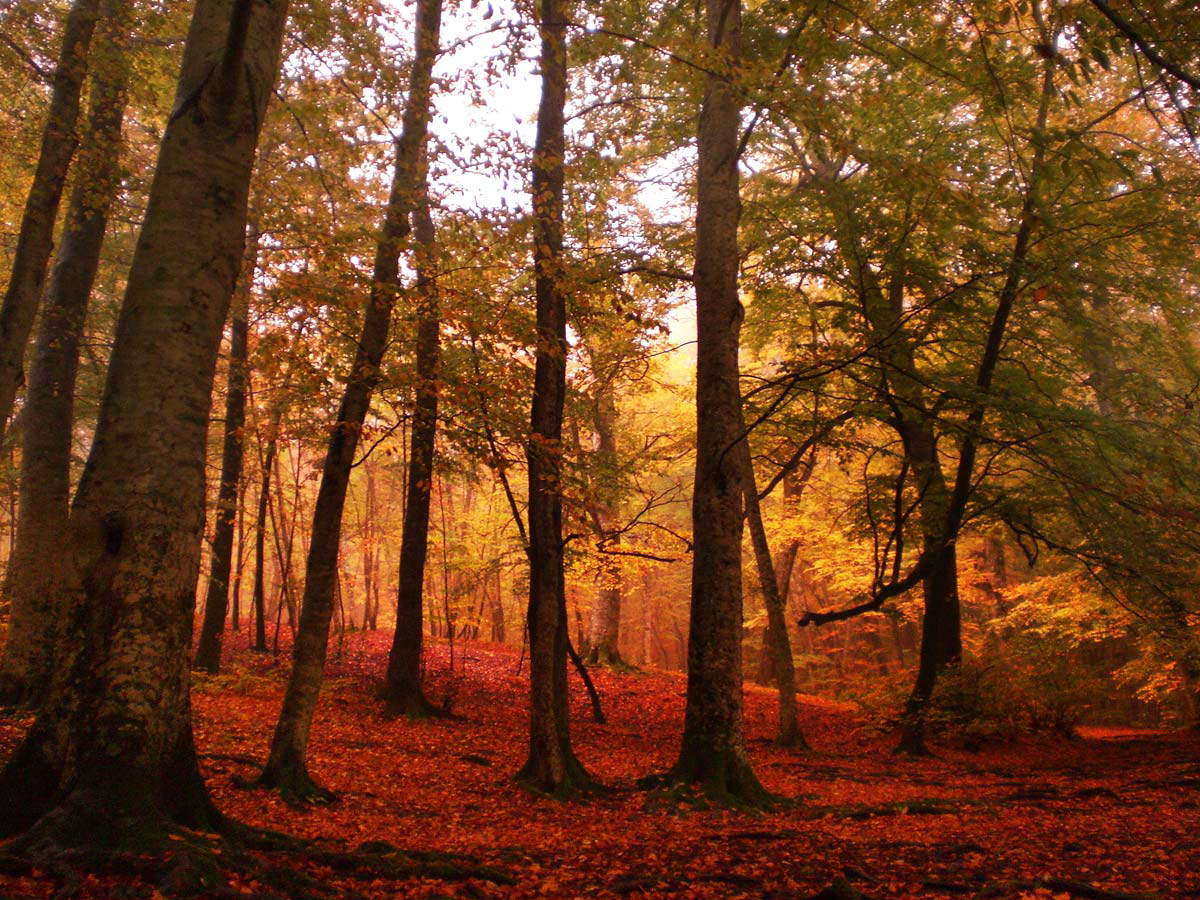
In the Cimini Mountains, at an altitude of 561 meters, is this medieval village that grew up around the Cistercian abbey dedicated to San Martino, precisely, consecrated in 1225, which administratively today is part of the municipality of Viterbo. In the 17th century, however, it had glory and independence, becoming a principality thanks to Olimpia Pamphilij Maidalchini, who had herself appointed princess by her brother-in-law Pope Innocent X. Donna Olimpia was responsible for the economic development but even before that the urban-architectural and cultural development since she wanted to endow her “kingdom” with what befitted such a rank. First-rate architects and artists such as Bernini, Borromini, Marcantonio de Rossi were called in and put their hands to everything, including the great abbey. Two buttressed bell towers were added to the sides of the facade designed by Borromini, and much of the complex was renovated or built over. In fact, Olimpia Pamphilij (whose family has a palace in Rome’s Piazza Navona) had her own mansion, the Palazzo Dora Pamphilij, built, swallowing up the former convent, which had been devoid of vocations for centuries by then, and the Abbey was drained by ecclesiastical authorities when the principality was established. Ti such grandiose Gothic-style structure with three naves with cross arches also remains the large polyphora in the middle of the facade, and a gold and silver bust is preserved in the transept. The palace is sumptuous and stately is known for the Aldobrandini Hall on the mezzanine floor and the Olympia Hall on the second floor. The village has a semi-elliptical shape being bordered by a city wall against which all the same houses were built, for the working classes, like terraced houses we would say today, with only two entrance doors, one towards Viterbo and towards Rome.

Do you remember the story of Hercules and his club? Here it is, the point of the incredible blow on the ground would be what is now called the Devil’s Cave and is located at the summit of Mount Venus and would be nothing more than the eruptive mouth of the Vicano volcano that collapsing on itself formed the crater represented by the Cimini mountain ring and Mount Venus, which would be the summit cone of the volcano. To reach the Cave you have to cross the beech forest to the end following a path well marked by the Cai (50 minutes of medium difficulty) and once on site (at 851 meters high) the tempting Devil would like to let you in but we recommend you do so only if you have the proper preparation and the right safety tools. The mouth of the Cave is 5 meters wide and inside there is a large space from which burrows and branches then develop.

In the territory of the municipality of Fabrica di Roma is the archaeological site of Falerii Novi, but we will talk about this later. There are several sights to see in this village, starting with the Farnese Palace that dominates the town and the 40-meter tower and the two-meter-thick walls of the ’Rocca,’ Palazzo Cencelli, where the Town Hall is now located, the richly decorated Church of Santa Maria della Pietà, built between the late 15th and 16th centuries. Its history is closely linked to the Roman nobility and the history of the popes: their vicissitudes and transitions of power influenced the development of Fabrica. Important people who passed through Fabrica include Julius II della Rovere (who during his pontificate often came to stay there to meet his cousin), Benedict XIII, Cardinal Giovanni Battista Pallavicini, and Queen Christina of Sweden.

Here we have evidence of the ancient Falasco people who, defeated by the Romans, were forced to leave Falerii, which they destroyed, to settle as ’deportees’ further on the plain: Falerii Novi, therefore. There were fortifications of considerable importance such as a wall with a perimeter of 2 km and as many as 50 towers. The city was accessed by nine gates among which the Jupiter Gate is of great interest: the head depicting the father of all gods in fact serves as a keystone and represents one of the earliest uses of the arch in Etruria. The many artifacts found are preserved at the National Etruscan Museum of Villa Giulia in Rome. Also of great importance is the Romanesque church of Santa Maria di Falerii with five apses by three naves, dating from the 12th century. Adjacent is the Cistercian monastery.
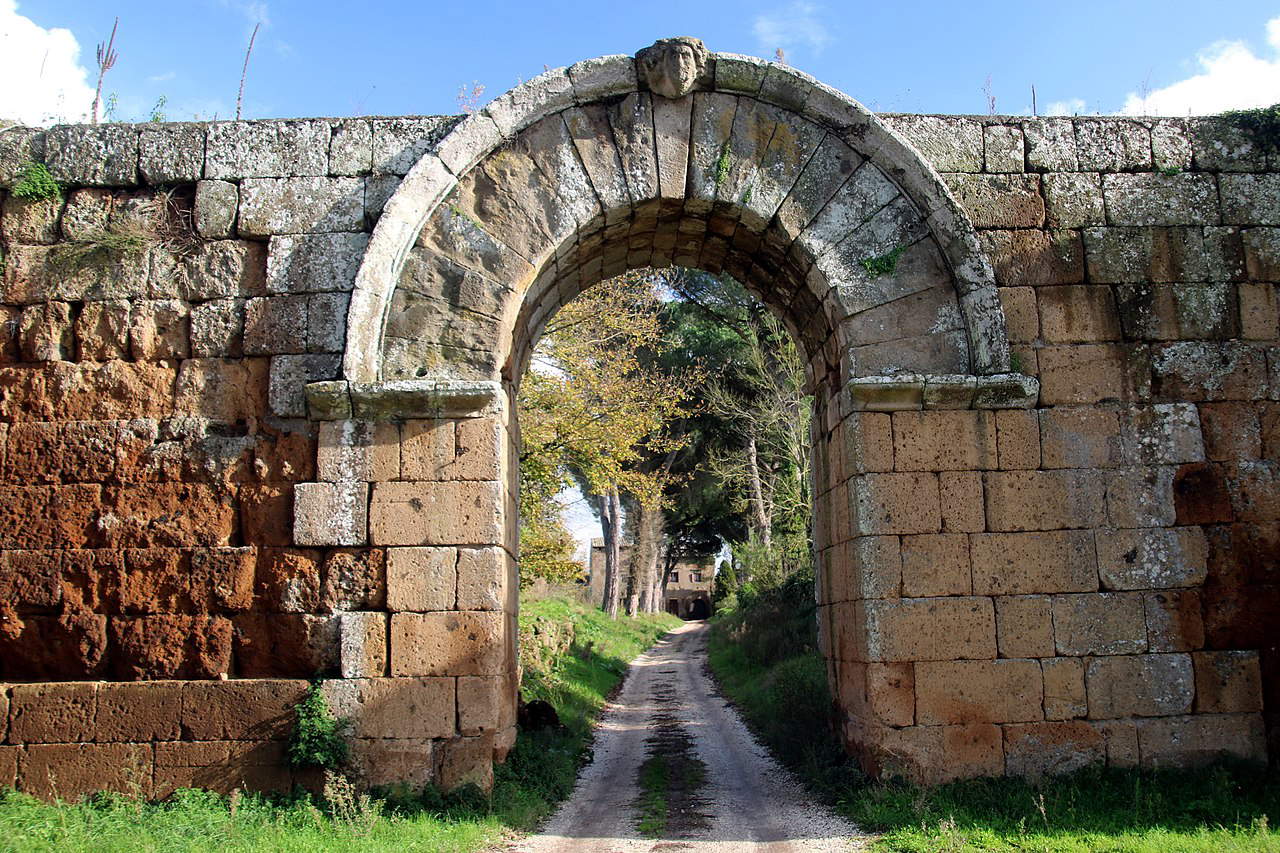
Soriano del Cimino, on the slopes of the mountains of the same name, is today a village that has grown up around the castle built by Pope Nicholas III of the powerful Orsini family for use as a summer residence. Dense and lush is in fact the surrounding vegetation and woods with chestnut trees in preponderance. In recent times, however, it was used as a prison until 1989. Developed in the Renaissance period with neighborhoods of great elegance and style, it is worth visiting Palazzo Albani Chigi by architect Ottaviano Schiratti, the Church of St. Nicholas of Bari built in the neoclassical style, the Papacqua Fountain and the Tonda Fountain (or Old Fountain). Of note is Porta Romana, built Prince Carlo Albani in the 18th century that is a copy of the more famous Pota Pia.
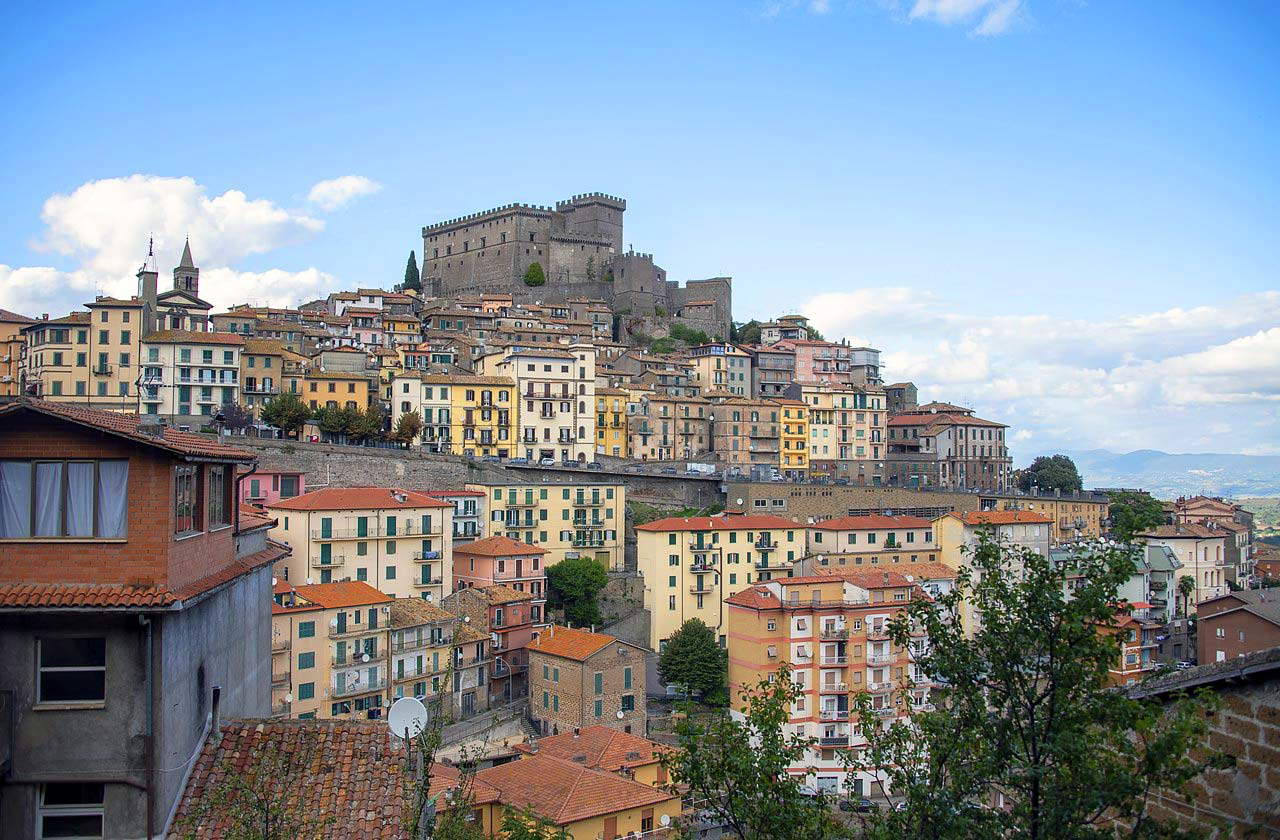
The Necropolis of San Giuliano is located in the Marturanum Regional Park along ancient Clodia, stands on the flanks of a tuffaceous cliff occupied by a stable settlement as early as the Bronze Age, and features an important variety of Etruscan tombs spanning five centuries, and there is no other known Etruscan necropolis with such a wealth of variety: tumulus, palatial, portico, hypogean, niche pit or dado. The tombs are mainly from the Archaic period but there are also from the Vll century B.C. and the Hellenistic period. Among the most important are the Cuccumella del Caiolo, the Caiolo tumulus, the ’Beds’ tomb, the Portico tombs, the ’Palazzine’, the Costa tomb, the Thansinas tombs, the two Valle Cappellana tumuli, the group of Archaic tombs in loc. ’Chiuse Vallerani’, the imposing Queen’s Tomb (5th century B.C.) in semidado with a monumental facade about 10 meters high, and the Tomb of the Deer, finally, features a marvelous bas-relief sculpture that gives it its name: a deer attacked by a wolf, today the symbol of the Park.
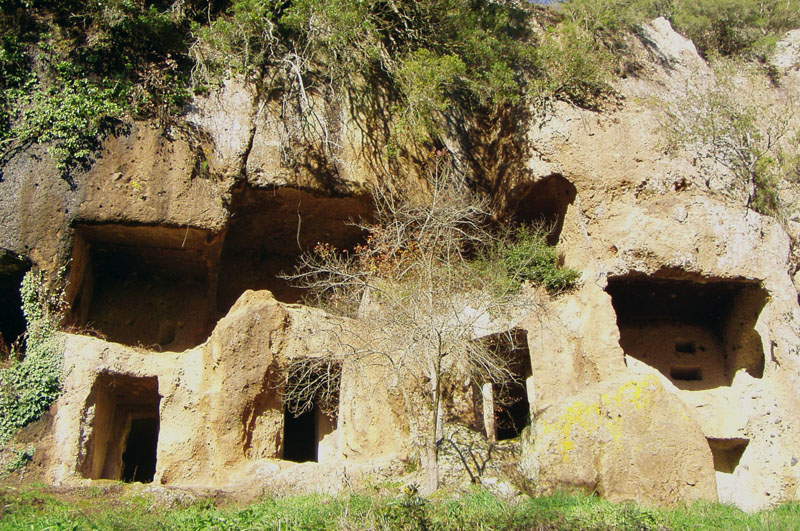
 |
| Lake Vico, what to see: 10 must-see stops |
Warning: the translation into English of the original Italian article was created using automatic tools. We undertake to review all articles, but we do not guarantee the total absence of inaccuracies in the translation due to the program. You can find the original by clicking on the ITA button. If you find any mistake,please contact us.